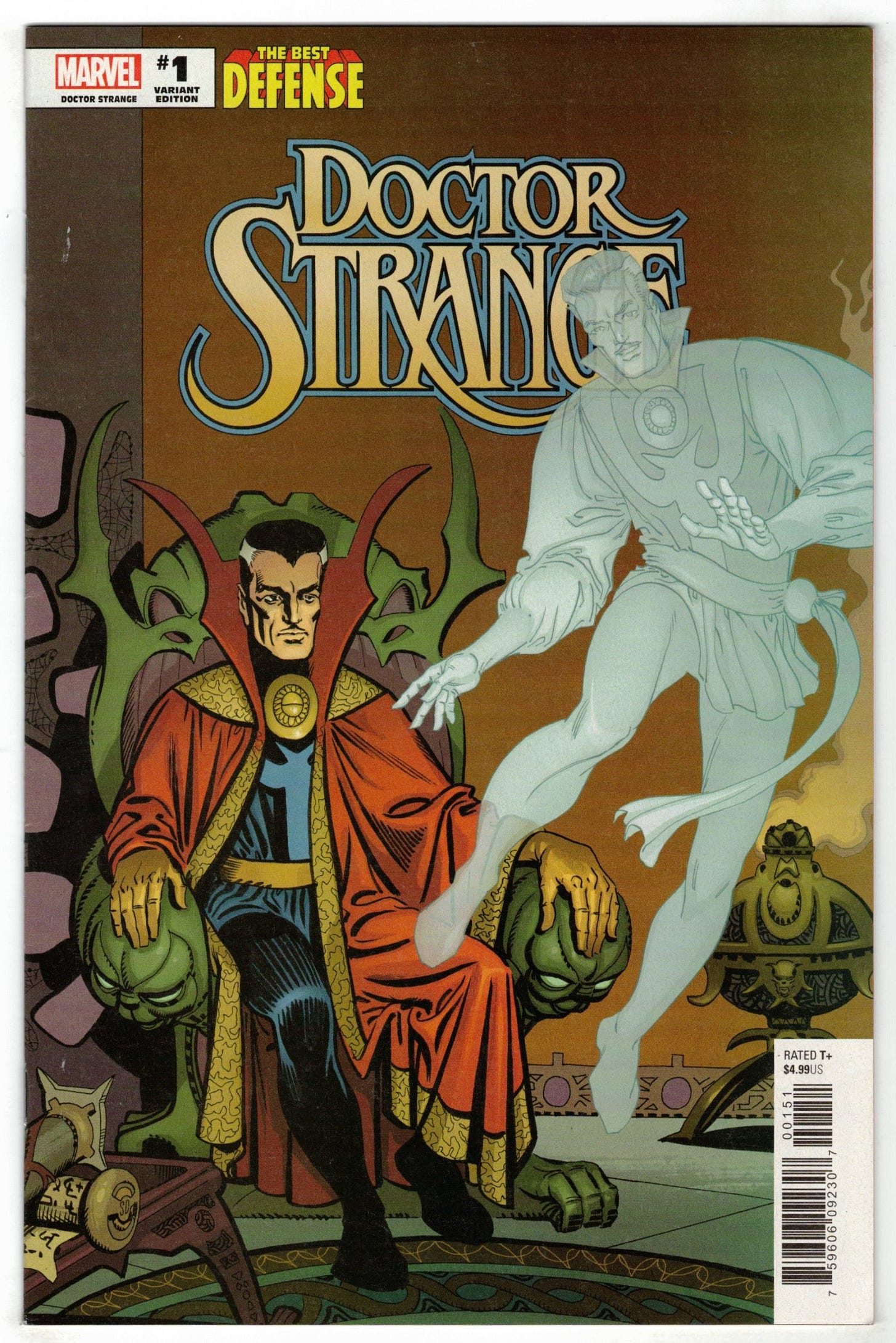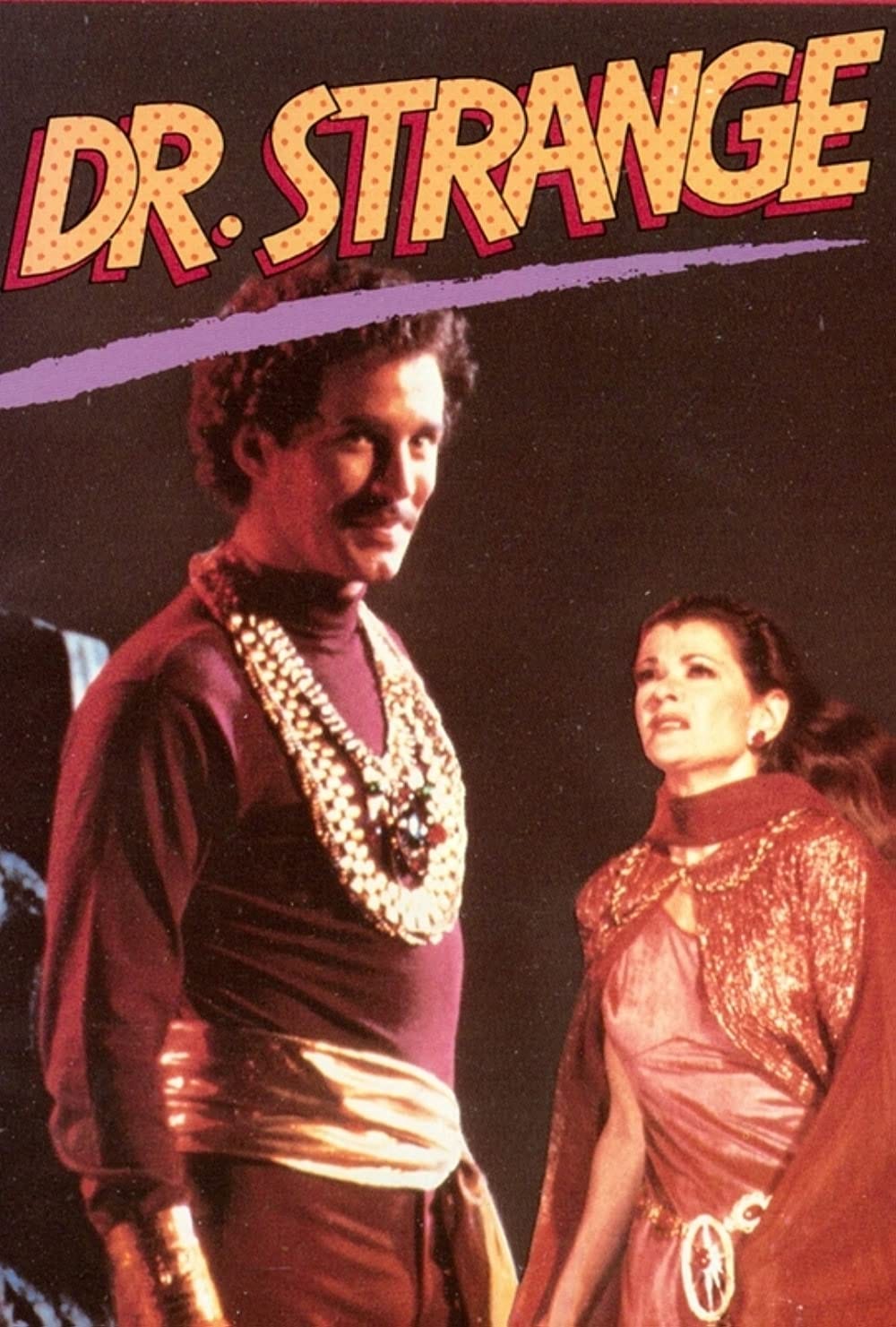I’ve been thinking about Steve Ditko recently as I’ve done off for the last few decades. Mr. Ditko was not a recluse. He just didn’t want to discuss what most of humanity wanted to talk to him about.
Back in the late 1980s there were semi-annual conventions in Manhattan. We snuck into our first few conventions because we weren’t allowed from NJ into NYC alone at the time. I didn’t say “comic conventions” because there were few shows that billed themselves as one.
Star Trek was driving fan conventions at the time. By 1989 STAR TREK: WRATH OF KHAN was already a classic, and it was that fandom that had the hot hand that decade. Comic books were offered a small area at most of these shows. I have no sense of whether comics drove attendance or not, but most folks today don’t seem to realize not long ago that comics books were a subculture that had a very cozy little ghetto at sci-fi cons.
It’s true, and I’m old.
After Jimmy Doohan drunkenly serenaded the audience we departed into the autumn night. I forget whether it was my friend Vin or my friend Kip who suggested we see which of our favorite creators was still in the phone book.
See italicized sentence above.
After the convention we found a pay phone and flipped through it. There weren’t many or any Ditkos in the phone book. We dialed and crowded around the receiver and wondered as it rang if this could be the S. Ditko.
It was.
We invited him to get together. Seemingly oblivious to the opportunity to meet us unchaperoned in the big city he said “No. Thank you.” and politely hung up he phone.
Ditko was drawing Speedball, and still working, but at that time to comic readers it was actually Stan Lee that had seemingly retired. In 1989 it’d been almost a decade since we had a new “Stan’s Soapbox”.
Meanwhile, a continent away Stan was anything but retired. He changed career in his late sixties and was living in California and working to produce film and TV. Those early years had their ups and downs, to be kind, but Stan was swimming upstream against studios that didn’t have access to the technology that would enable a realistic superhero universe on screens. Still, Stan pushed that boulder up the mountain every day.

This is just my opinion, but Stan Lee probably gets too much credit for the comics he collaborated on. I think it’s also true that Stan didn’t get enough credit for advocating for those creations as a producer in Hollywood. I’ve been out here doing it for twenty years, and trust me — it’s real work.
I’ve been noodling on this piece and earlier this week Jason Latour’s first post on Stan & Steve arrived. It’s required reading before I continue on. Jump there, enjoy it and jump back here.
Jason and I agree that Stan’s writing on Spidey helped give the character his mass appeal, but Stan’s contributions were needed less in Strange Tales, and the purest form of Ditko at Marvel remains his writing and art on Doctor Strange.

In the seventies Marvel partnered with Simon & Schuster for what had to have been one of, if not the first “trade paperback” collections. They were full color reprints of Marvel comics that ditched the newsprint paper and sold for 3.95. (Interesting note: my copy was marked up to 12.95 at one point, indicating a later demand for this out of print collection)
There are some hardcover editions, but I’ve never even seen one. If you wanna see what printed and how head over to the Wikipedia page for the Fireside Books collections.
It’s worth noting that it wasn’t all reprinted material. There was one original comic that Stan, Jack and Joe Sinnott teamed up on. It’s thought of as the first “original graphic novel” in America, and beat Eisner’s A Contract With God to press by a month, so maybe it really was the first American OGN.
Back to Stan Lee. The only Fireside Marvel book I have in my collection is a reprint of Dr. Strange: Master Of The Mystic Arts. It has a painted cover by Bob Larkin, which is basically a reimagining of a wonderful pin-up by Dr. Strange co-creator and writer/artist Steve Ditko. I know it well, because I have only one comic with the Dr. Strange logo to my credit and it had a variant cover of Strange’s astral projection off to do Sorcerer Supreme business.
This is that scene as interpreted by Bob Larkin. It’s not Bob's work that makes me wince when you first look at the cover.
The name glaringly missing from the cover is that of Strange’s co-creator, writer/artist Steve Ditko. As a comic writer, I know the book market is not always kind to writer/artist collaborations. There are entire runs I’ve been a part of that are credited to be either in solicits, or on websites, and sometimes even on the books themselves. The reasons are many, some good and some not so good, but once you are in the “book market” you’re in the domain of people that are used to seeing a single author on books. Single columns for authors on excel spread sheets. On spines. Data that shows they sell better than multiple names. Doesn’t feel great, but it’s institutionalized.
What's really interesting is that Stan wrote a lot of new material for the book. They collect some great Strange Tales stories, the Amazing Spider-Man Annual guest starring Doctor Strange, and it ends with Barry Windsor Smith’s issue. I mean, c’mon.
The Fireside book was undoubtedly timed to capitalize on 1978’s Dr. Strange TV movie.
Ditko was just a memory at Marvel in 1978 and the whispers of bad blood between the two collaborators were on the wind began before I was even born, so imagine my surprise to find on the first page of the reprint collection that Stan had dedicated the book to Steve. (He also dedicated it to the actor playing Strange in the TV film, but let’s chalk that up to Stan being a good Hollywood producer.)
There’s about a half dozen pages of new remarks from Stan in the book, it’s really fun stuff, and obviously of Stan’s typewriter. He makes crystal clear that he was at best a co-pilot on Ditko’s Strange. Of their collaboration on the character Stan wrote this passage in before reprinting Amazing Spider-Man Annual # 2:
Steve Ditko’s one the best plot men in the biz.
When it comes to dreaming up story ideas, putting them together intricately, Panel by panel, and utilizing the best of cinematic techniques, the guy's a whiz. Thus, the spectacular saga that is about to knock you out was basically concocted by our own Mr. D. But in case you're wondering what yours truly had to do with it…
…somebody has to put in the words. Lamentable as it may seem, they simply don't appear by magic. So, that's my job. After Steve did the hard part — after he dreamed up the story and illustrated it in his own unique style — I then got to do the fun part. I wrote all the squiggly little words: the dialog balloons and captions, the soliloquies and the snide remarks, and all the little sound effects that drove Steve bonkers 'cause they cluttered up his artwork! Yep, that's how we did it, and I hope you dig the daffy result.
Unfortunately Mr. Ditko didn’t enjoy the collaboration with Stan, but I don’t think either was as good apart as they were together. Has anybody done so much with as few issues? By the time Ditko walked off Amazing Spider-Man, they’d created not just a pop culture icon, but almost certainly the best rogue’s gallery in all of fiction. Unlike the shared credit for Spidey, I pretty much give all the Dr. Strange credit to Ditko.
But, those are like, just like my opinions, man.
Truly amazing that such a straight arrow could cook up the visuals in Strange Tales. Imagine if he had been into the counterculture and dabbling a bit in the recreational pharmaceuticals?
Coming soon: some more thoughts on Mr. Ditko from my time as one of his many penpals, including his response to my suggesting he seek out Lone Wolf & Cub. Plus, in early March I’ll have another look at the process.
You folks enjoyed the look back at Planet Size X-Men, so I’ve selected another comic to talk about this one featuring the Sorcerer Supreme.
All the best,
GD








This was a great read!